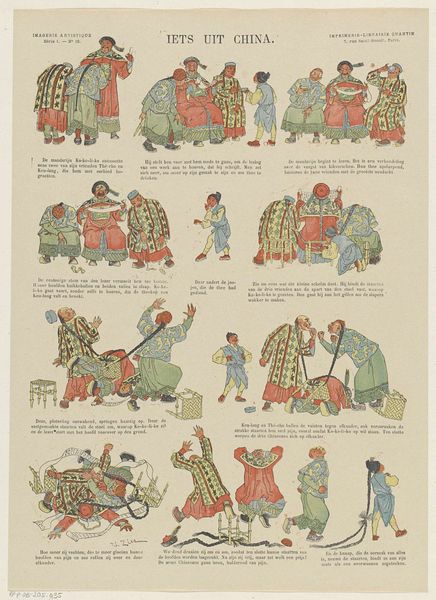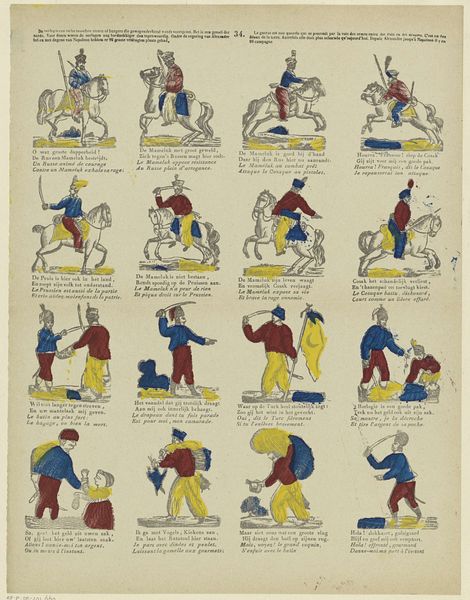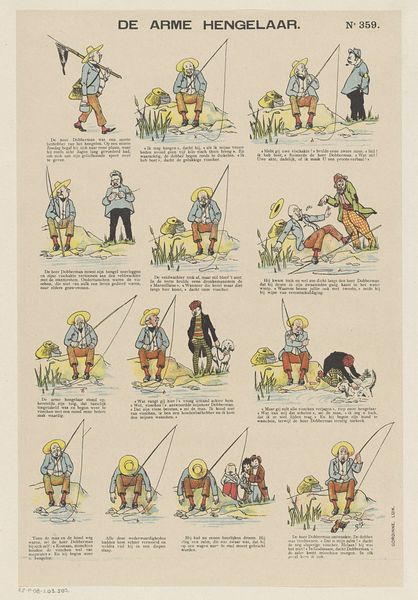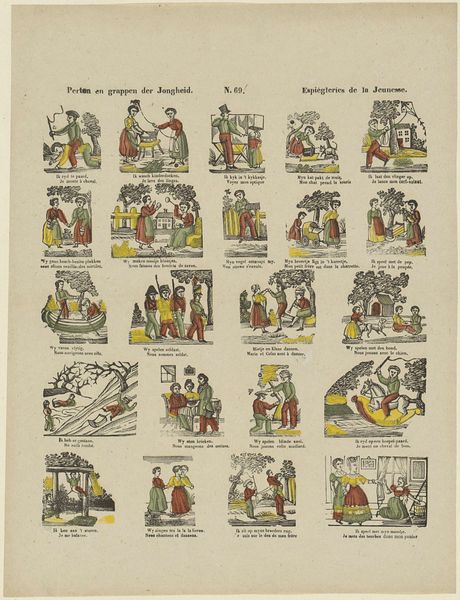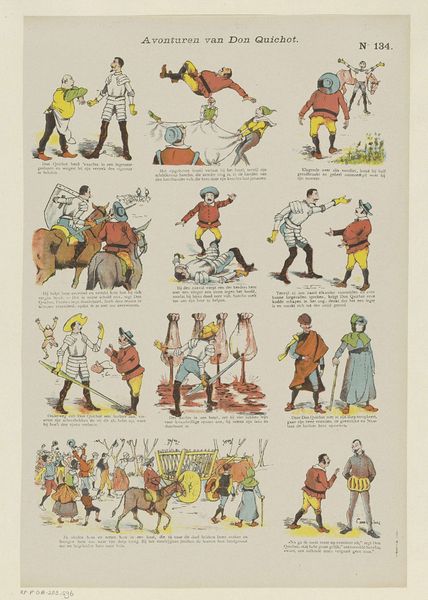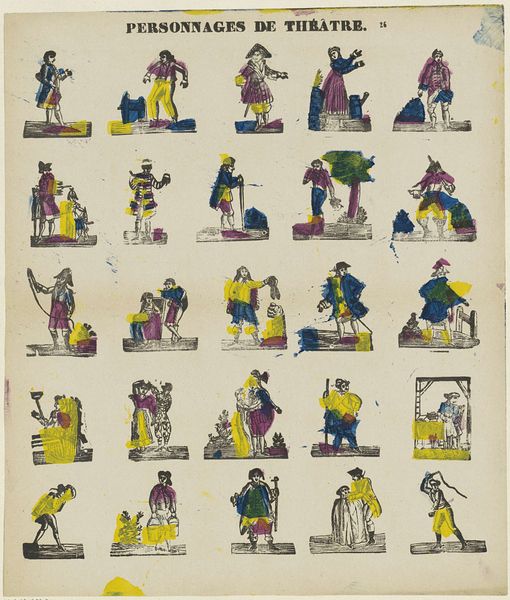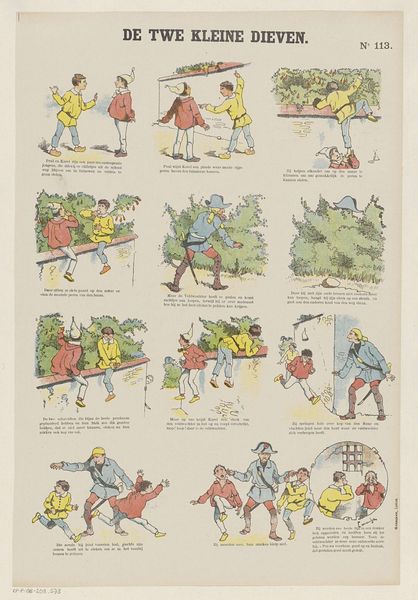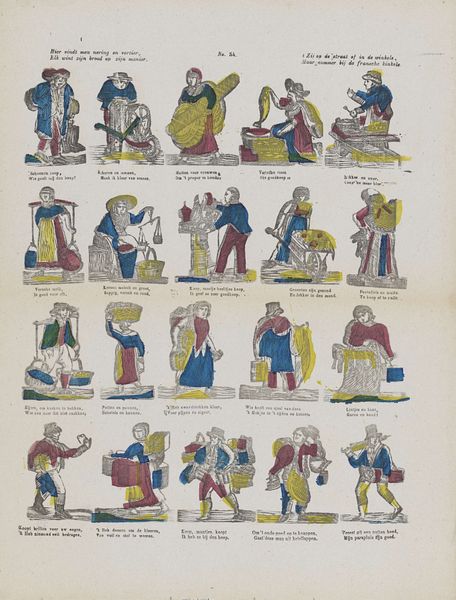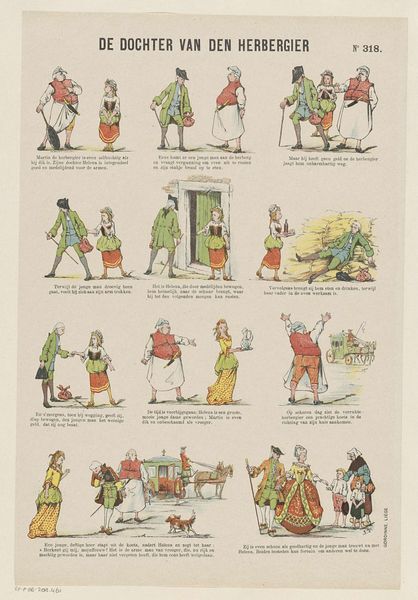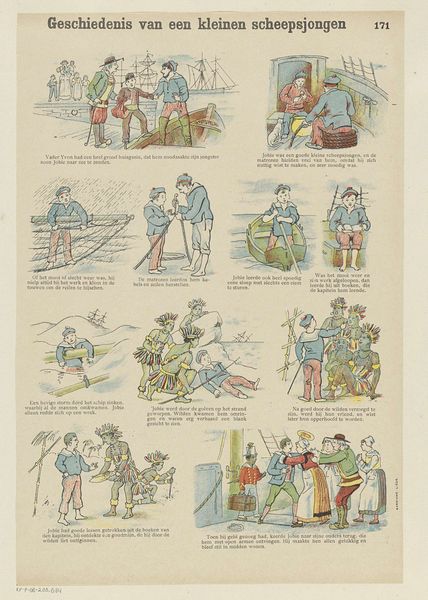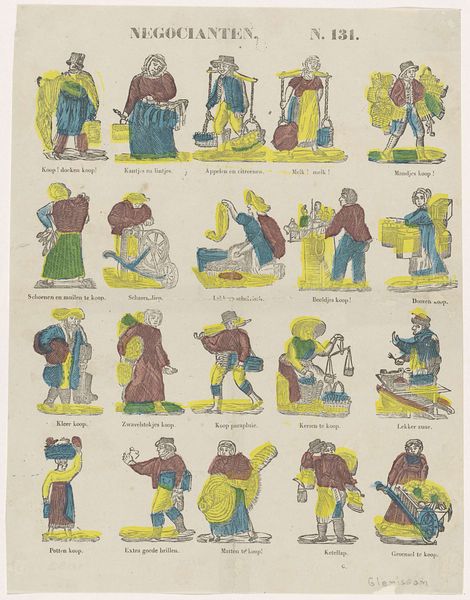
#
narrative-art
# print
#
caricature
#
folk-art
#
comic
#
genre-painting
Dimensions: height 399 mm, width 270 mm
Copyright: Rijks Museum: Open Domain
Curator: Looking at this colorful print from between 1894 and 1959 entitled "Nuttelooze les" or "Useless Lesson" by Monogrammist JGr at the Rijksmuseum, I can’t help but smile. What’s your first reaction? Editor: It feels rather episodic, almost like frames from an early cartoon, documenting the stages of what seems like comical intoxication. Curator: Exactly. This print clearly participates in the genre of folk-art narratives and caricature that gained popularity as affordable printmaking became more widespread. The ‘useless lesson’ perhaps points to the societal perception of the working class at the time and how alcohol impacted the familial environment. The work is making a clear socio-political statement on moral grounds. Editor: The figures are composed almost in a flattened picture plane and stylized poses within each small frame enhance its charming narrative structure. Notice how each character relates in both positive and negative space to the text around them. It’s surprisingly cohesive! Curator: The accessibility of these images often came hand in hand with the rising tides of the temperance movement. Images like these would circulate in an effort to highlight, even demonize drinking behavior. But to focus on its historical implications and overt meaning misses a critical dimension of its production. What do you think the image meant to its viewers? Editor: You raise an important point! Perhaps a middle class looking down, or a bar goer wincing in shared pain and empathy at a harsh reminder of reality! Curator: It is hard to assume with certainty but such images surely functioned as moral guidance in rapidly changing European society. These cheap prints made their way into working-class homes and pubs across Europe for social commentary. Editor: Reflecting on it now, there is a universality in the human foibles portrayed that I didn't notice at first glance, even despite its obviously didactic, educational function. Curator: Yes, whether consumed with laughter or judgment, this work offers a lens into how personal habits were perceived, projected, and problematized during periods of great social transformation.
Comments
No comments
Be the first to comment and join the conversation on the ultimate creative platform.

